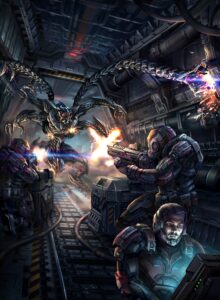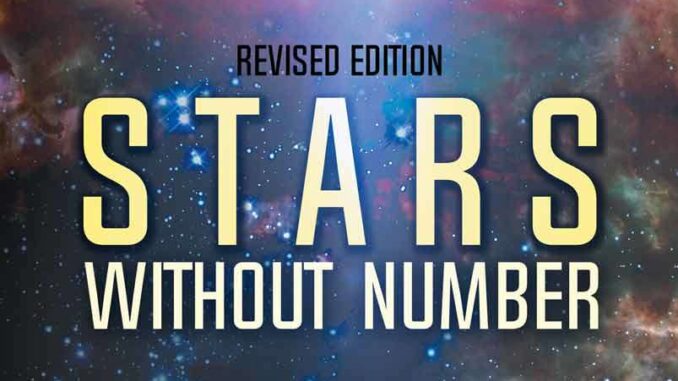
This week, I’m giving you The Skinny on one of my favorite sci-fi RPGs, Stars Without Number (SWN) by Kevin Crawford – specifically, the Revised Edition. SWN is a hard sci-fi/space opera RPG that focuses on sandbox play and hex-crawling through a sector of forgotten space. The game provides the GM and players with a lot of neat tools they can use to customize their own space sector and make it feel alive and bustling.
One of the most amazing things about this game, aside from how brilliant its various tables and subsystems are, is the fact that there’s a Free Version without art or extra features like transhuman tech or space magic rules. Gamers beware: once you have a taste of the Free Version (and see the art in this article), you may be sorely tempted to drop some cash on the Full Version!
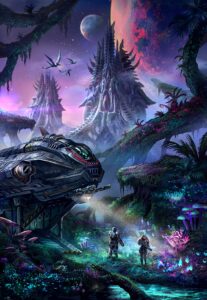
The Setting
The setting in Stars Without Number is fairly vague, as one might expect of a game that is laser-focused on sandbox play. Every GM is expected to develop a unique sector of space in which to explore. But fret not – unlike other games where world-building can take hours upon hours of work, SWN provides a lot of great tools and tables in order to make creating new content for your sector a breeze.
The book does go into some detail establishing an in-game history and timeline, which can be used for inspiration or ignored at the GM’s whim (SWN has few if any alien life-forms by default; if you want aliens, you’ll have to alter the in-game history a bit). The basic summary of the default setting is as follows:
Early in the 22nd century, humanity developed the capacity for interstellar travel through hyperspace, and subsequently began exploring and colonizing countless star systems over the next millennium. During this time, a small percentage of humans began to develop psychic powers. Humans learned to develop technology that could harness this psychic minority’s strange abilities in order to create psychically-activated Jumpgates that were much faster and more stable than hyperdrives; humanity expanded so far across the galaxy that no one entity could rule them all, so many space sectors developed their own governments.
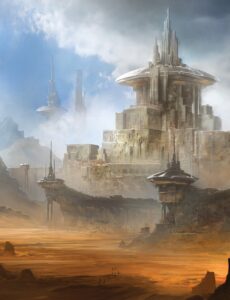
Then in 2665, a giant wave of multidimensional energy washed over the galaxy, destroying all the psitech and driving all the psychics mad. This event would eventually become known as “The Scream.” The Scream ruined humanity’s capability to travel between star systems; most if not all of human civilization fell into a dark age of interstellar isolation. The dark age continued for centuries, but by the year 3200, some star systems were able to rediscover the hyperspace technology that had once propelled humans across the stars, and began to re-explore and reestablish contact with long-lost neighboring systems. Thus begins the dawn of a new era of human civilization.
This is the default backdrop of every Stars Without Number campaign. Parties take on the roles of a ship crew that for whatever reason travels between their sector’s star systems, always finding new opportunities for adventure.
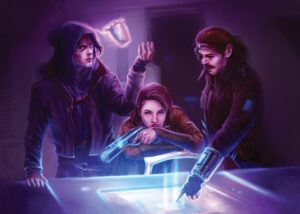 Core Mechanics
Core Mechanics
Stars Without Number is an OSR (Old School Renaissance) game, and is based mainly on early D&D. Combat uses a d20 to resolve actions, and the general structure of combat should be familiar to anyone who has played a d20 game. There are also 3 Saving Throws, directly mirroring D&D 3.x: Physical, Evasion, and Mental. Inspiration from Traveller, one of the earliest and best-known sci-fi tabletop RPGs, is apparent not only in the concept of exploring/hex-crawling through space, but also in the use of 2d6 for skill checks. The split between 2d6 rolls and d20 rolls is a bit funky, but every party I’ve played with has been able to adapt quickly. In any case, dice-rolling, when required, is a simple and familiar matter of rolling the dice and trying to beat the DC assigned by the GM.
Players can choose between the classes of Expert (a skilled specialist), Psychic (a psionic “magic” user), Warrior (skilled fighter), or Adventurer (a catch-all for pretty much everyone else). There are many different Backgrounds with which players can distinguish their characters, including options like Merchant, Pilot, Technician, Courtesan, and even Peasant. Characters are further customized by Foci, which are similar to feats in some other d20 games. These generally enhance your characters’ skills and/or give them interesting and unique abilities. Some example Foci include Assassin, Hacker, Star Captain, and Healer, among others.
Another important thing to know about SWN is that it is designed specifically with sandbox-style play in mind. The planning of any new campaign always begins with randomly generating a sector of space of 30 (5×6) hexes, which can then be populated with planets, moons, asteroid belts, and space stations; every star system will have its own assortment of NPCs, mysteries, factions, and threats for the PCs to encounter. The game has an incredible array of random charts and subsystems to assist you in your creation, including planetary characteristics, societies, technologies, and points of interest. Of course, you’re always welcome to come up with your own ideas whole-cloth.
One final aspect of the mechanics worth mentioning is the Faction subsystem. SWN uses a set of rules in order to simulate the maneuverings and intrigues of various organizations, governments, cults, etc. that players may encounter during the course of their travels. These may affect the characters directly, such as a Bounty Hunter guild that is hired to capture or kill them, or may affect them indirectly, as could be the case if two planetary governments go to war and thus disrupt the party’s lucrative trading business. These developments always occur while PCs travel between systems and/or in-between game sessions. This allows for a dynamic and exciting world, with people, factions, and events that feel realistic and appropriate.
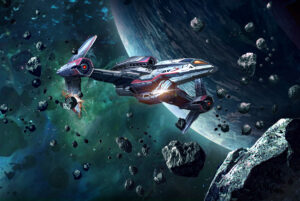 The Skinny
The Skinny
Stars Without Number is an incredibly well-developed game. I’d go so far as to say that it’s the best sandbox-based RPG I’ve ever played, and certainly in my Top 5 Sci-Fi RPGs of all time (hmm, I see another potential Top 5 article coming in the near future). If you’re the sort of player who likes hard-science settings combined with space opera-like adventure and sandbox-style play, this game is absolutely perfect for you. Its tools and charts provide numerous points of inspiration for designing and prepping your campaign and game sessions. Whether players want to run the most successful interstellar trading company in the sector, become an interstellar group of sellswords who hire themselves out to the highest bidder, or discover the lost secrets of pre-Scream civilizations, you’re guaranteed to have an endless amount of fun. Combine that with the fact that you can pick up the entirety of the core rules for free, and I can’t think of a single reason not to go download it and give it a whirl.
Do you have thoughts or questions about the article or suggestions for future content? Leave a comment below or drop me a line at jtdimino@d20radio.com.
J.T. Dimino
Latest posts by J.T. Dimino (see all)
- The PC Factory: Aedan the Druid (Old School Essentials) - January 26, 2021

